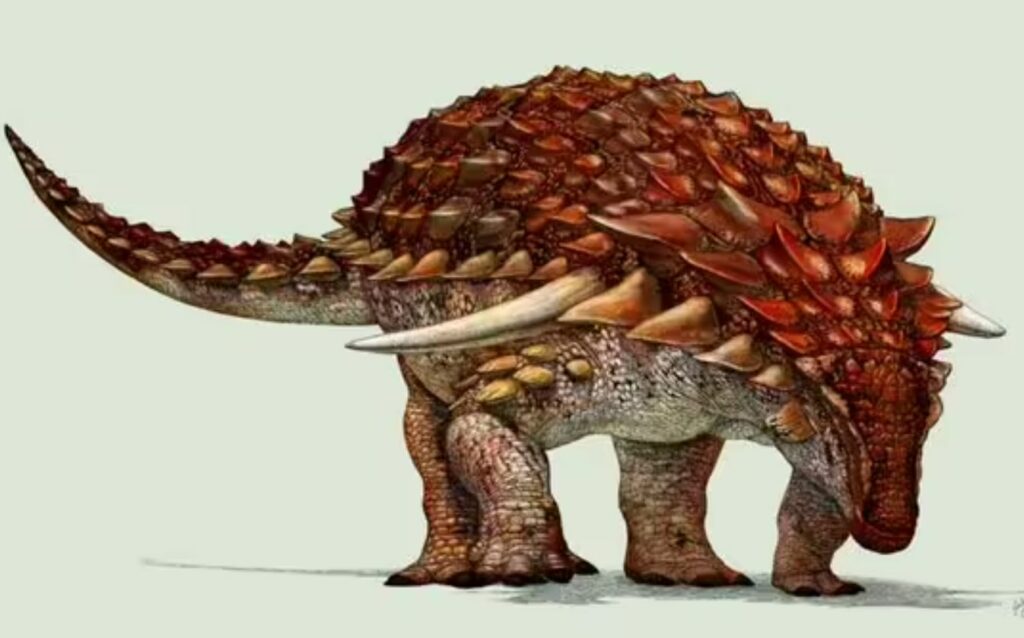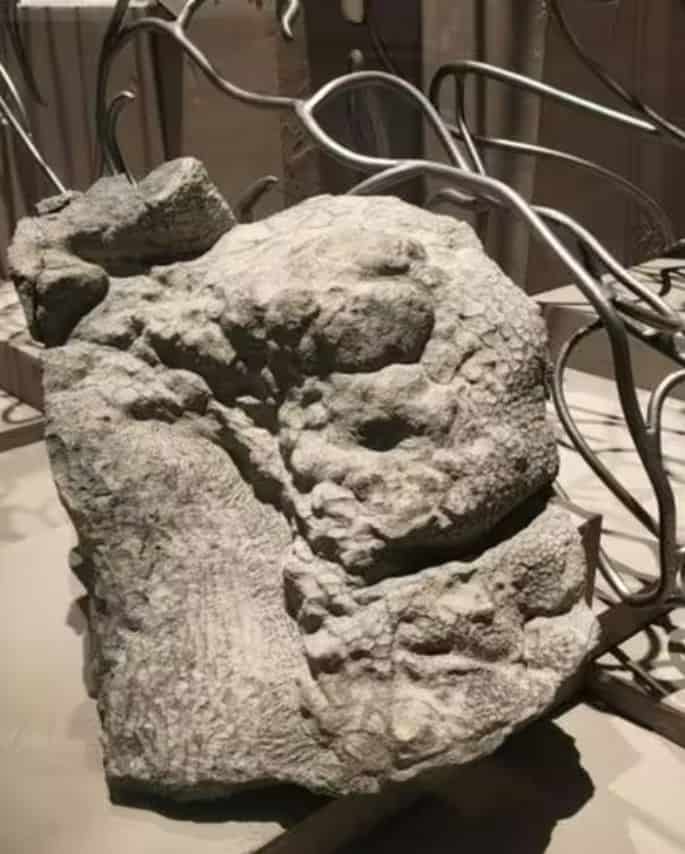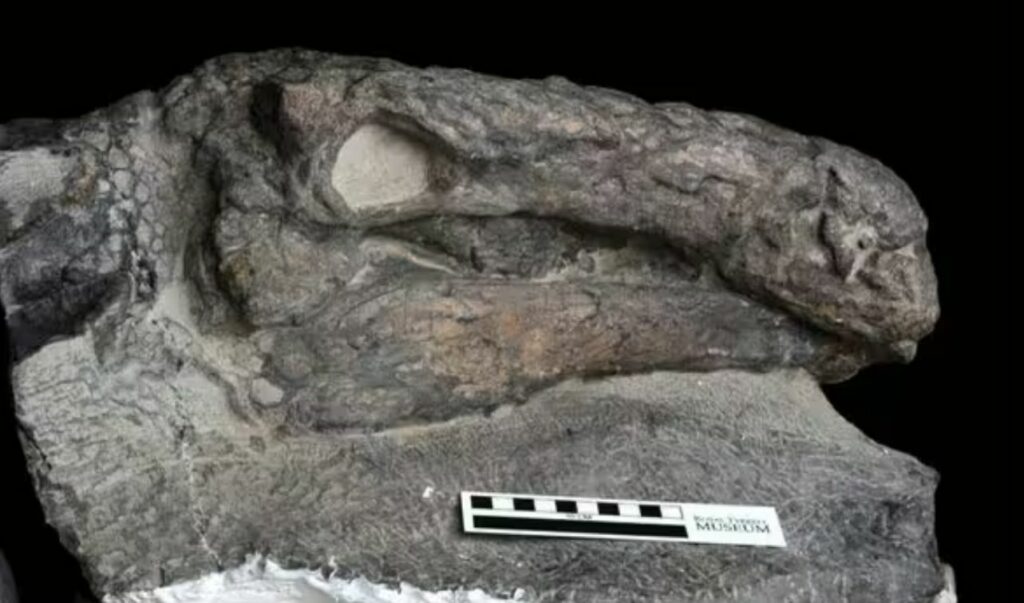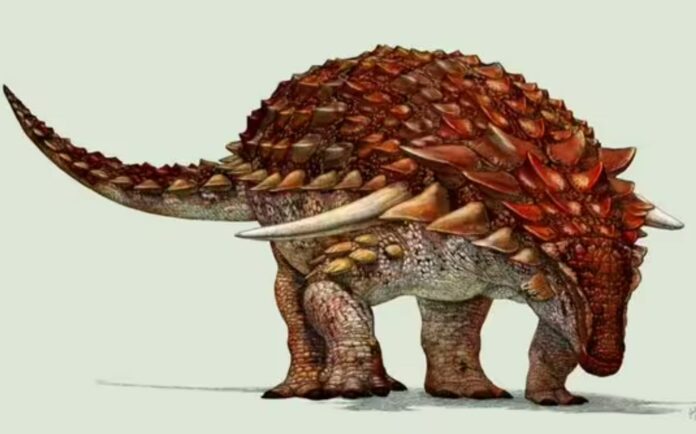The nodosaur, as it is usually called, may be one of the best-preserved dinosaurs in the world.
Palaeontologists made a ground-breaking discovery when they discovered the bones of a dinosaur whose skin was still attached to its body. It was lauded by the experts as a “one in a billion” discovery that gave them a far better idea of what these amazing reptiles looked like in real life. The researchers found that practically all of the animal’s bones, including its skin, outer armour, the spikes that ran down its side, the majority of its torso and feet, and even its face, had survived millions of years of fossilization.
The Royal Tyrrell Museum’s dinosaur curator, Dr. Donald Henderson, called the Borealopelta markmitchelli “a one-in-a-billion find.”
Apart from being remarkably well-preserved, this dinosaur’s bones, according to researchers, are important for understanding the ecosystem of the Early Cretaceous period and the species that lived there.
Since its discovery in 2011, researchers have examined the markmitchelli’s bones, armor, and even the food it consumed in its dying days to learn more about it.

Borealopelta is a form of four-legged ankylosaur having a straight tail rather than a tail club, often known as a nodosaur. Researchers were confused when they found it in an ancient sea environment because it lived on land.
But this didn’t happen very often to land-based megaherbivores like the nodosaur, as many other ankylosaurs have been found in the same way.

Scientists think that the animal’s body may have been swept into the water during a flooding incident, where it may have “bobbed” at the water’s surface for a few days before sinking into the ocean’s depths.
This behavior is known as “bloat-and-float,” which implies that once a dinosaur dies, gasses accumulate within it and keep it buoyant.
Dr. Henderson used modeling to figure out that the heavy armor on the nodosaur probably caused it to roll onto its back. This may have stopped ocean predators from eating its body.
After the bodily gases that were holding the creature afloat were released, it started to sink and landed on its back on the ocean bottom.

“We can see it went in water deeper than 50 meters because it was preserved with a particular mineral called glauconite, which is a green phosphate mineral,” points out Dr. Henderson.
“And it only forms in cooler temperatures in water deeper than 50 meters.”
According to him, scavenging was unlikely in this deep-sea environment as it was uninviting to long-necked plesiosaurs and large fish.
He explained that it was too dark and cold, and there was an absence of food sources. Moreover, the sediments around it revealed minimal trace fossils.
“So there wasn’t much in the way of worms and crustaceans and bivalves and things in there to further digest it. It was just a nice set of conditions in the seabed that had very low biological activity that led to that preservation.”
The researchers noticed that the fossil was covered in a very thick and hard solid mass called a concretion. This is one of the reasons why it was so well preserved.
This concretion, which often develops around fossils, preserved their remnants in three-dimensional shapes, as opposed to the flattened 2D fossils that are commonly discovered after being subjected to pressure for millions of years.
Dr. Henderson noticed that this concretion helped keep the nodosaur’s skin from breaking down over time, even stopping bacteria from doing so.
Image Credit: Royal Tyrrell Museum of Palaeontology
